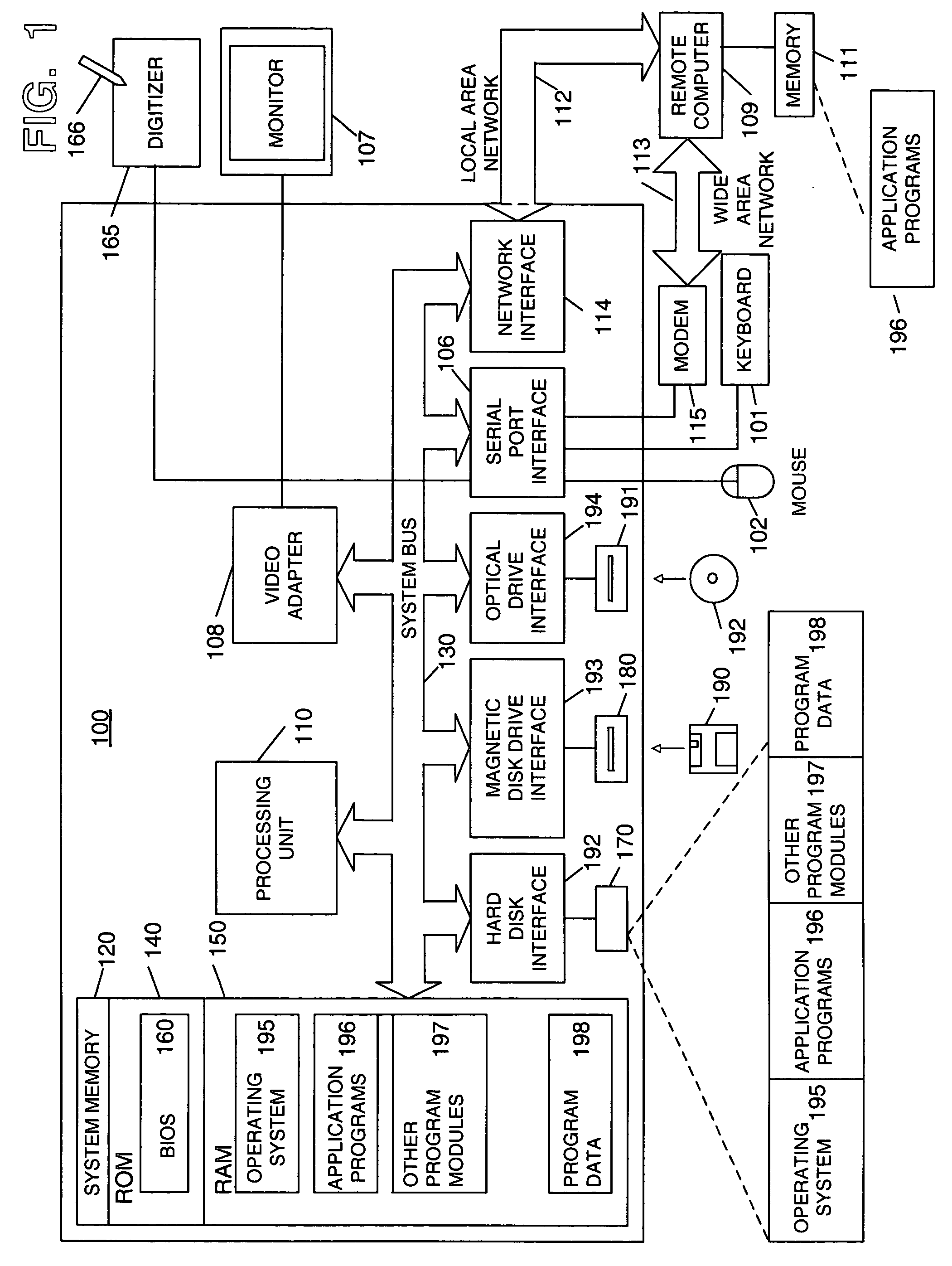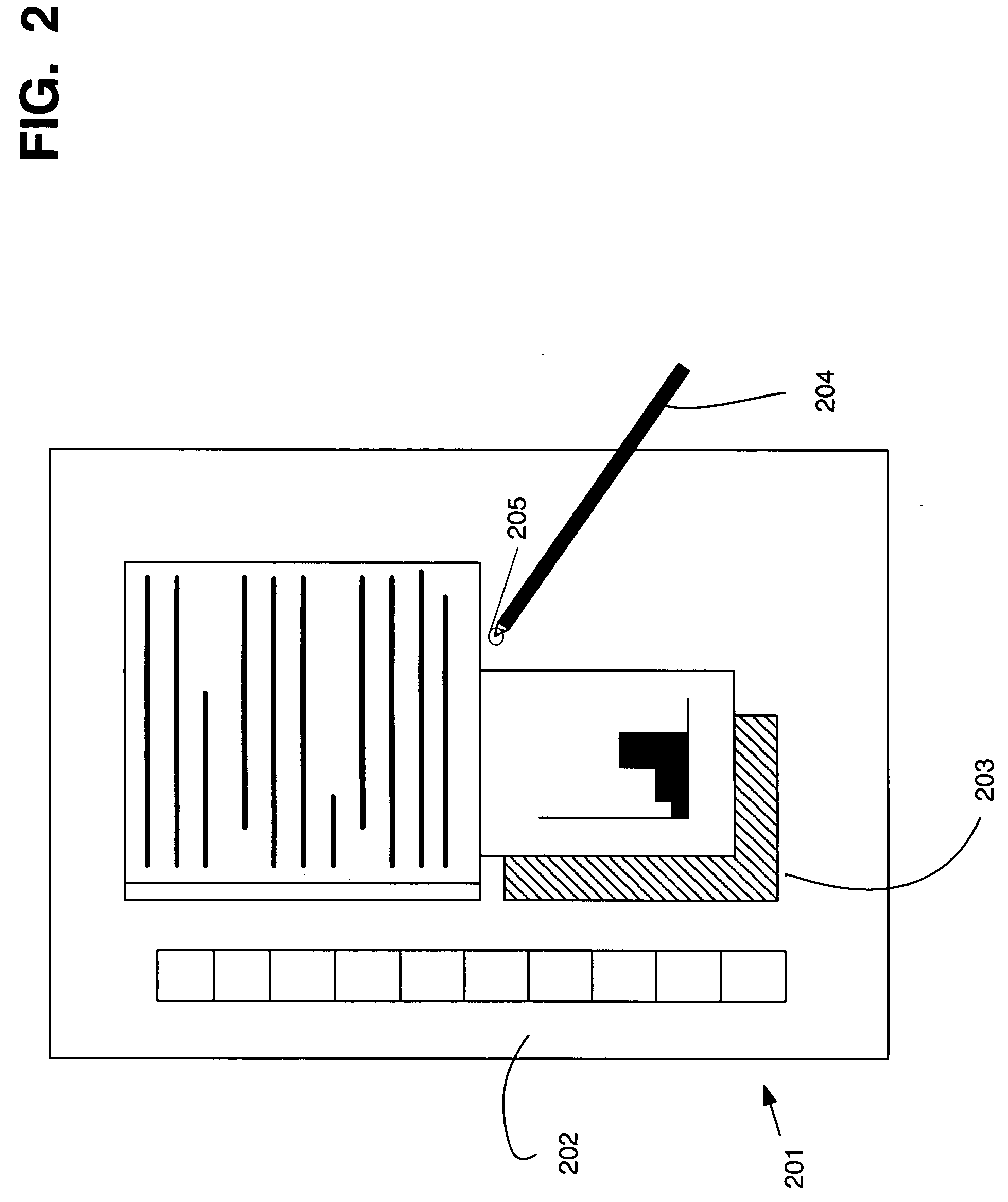Modifying electronic documents with recognized content or other associated data
a technology of electronic documents and content, applied in the field of modifying electronic documents with recognized content or other associated data, can solve the problems of poor handwriting, specialized terms, abbreviations, acronyms, etc., and achieve the effect of enhancing editing capabilities
- Summary
- Abstract
- Description
- Claims
- Application Information
AI Technical Summary
Benefits of technology
Problems solved by technology
Method used
Image
Examples
Embodiment Construction
[0023] As described above, aspects of the present invention relate to systems, methods, and computer-readable media for processing electronic data and interacting with electronic text, e.g., when modifying or editing electronic documents. The following description is divided into sub-sections to assist the reader. The sub-sections include: Terms; General Description of Various Aspects of the Invention; Example Hardware; Example Systems, Methods, and Computer-Readable Media According to the Invention; and Conclusion.
I. TERMS
[0024] The following terms are used in this specification and, unless otherwise specified or clear from the context, the terms have the meanings provided below:
[0025]“Pen”—Any type of user input device useful in entering electronic ink into and / or otherwise manipulating or controlling an electronic document, a user interface, and / or a computer operating system. The terms “pen” and “stylus” are used interchangeably in this specification.
[0026]“Pen-Down Event”—A...
PUM
 Login to View More
Login to View More Abstract
Description
Claims
Application Information
 Login to View More
Login to View More - R&D
- Intellectual Property
- Life Sciences
- Materials
- Tech Scout
- Unparalleled Data Quality
- Higher Quality Content
- 60% Fewer Hallucinations
Browse by: Latest US Patents, China's latest patents, Technical Efficacy Thesaurus, Application Domain, Technology Topic, Popular Technical Reports.
© 2025 PatSnap. All rights reserved.Legal|Privacy policy|Modern Slavery Act Transparency Statement|Sitemap|About US| Contact US: help@patsnap.com



